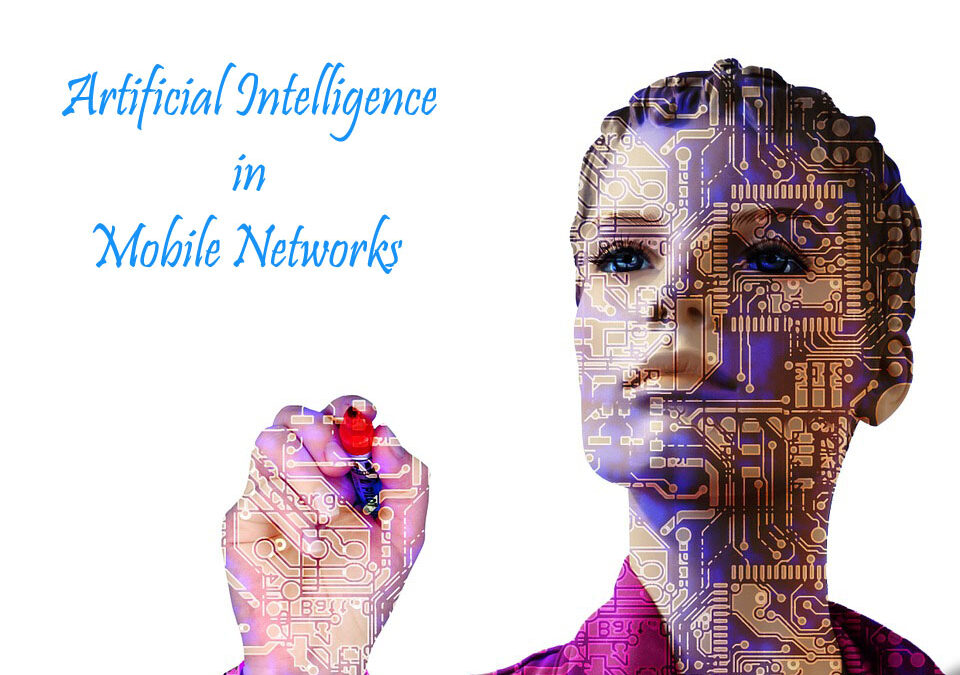It doesn’t matter if you consider that Artificial Intelligence (AI) is just an extension of advanced analytical solutions or that it is a revolutionary technology that gives computers a superhuman intellect, it is crucial to know that all industries are beginning to feel their impact.
From intelligent content systems in social networks to sophisticated detection of banking fraud, artificial data-based intelligence is becoming essential for every business of the digital age.
Network operations have not been immune to this impact. An example is the Finnish mobile operator Elisa, who recently held the headlines of the press announcing a network operations center without people and which credited with a 15% drop in customer claims.
The impact of artificial intelligence on telecommunications could extend to areas ranging from customer service to the detection of network interruptions or advice on optimization strategies. However, before it can generate a real impact in these areas, it must be implemented in such a way as to ensure its reliability and effectiveness.
AI plays a very important role in mobile app development. Without an AI component, apps get discarded. So, for better solutions more insights and ease.
Table of Contents
ToggleWhat, then, are the Important considerations for the Mobile Industry around Artificial Intelligence?
The European Union (EU) recently published a list of guidelines for its implementation, which is summarized by saying that a reliable AI must be legal, ethical, and sound.
Among other concerns are the need to protect personal data, the history of biases that arise in AI decisions, and the processing of “Black-boxes” that human operators cannot interpret or understand, which can lead to making decisions based on probably incorrect information.
At its simplest level, we could say that AI is as good (in a stable, legal, and ethical way) as the information that feeds it. How can operators then ensure that they will effectively obtain the correct data?
The most important thing is, without a doubt, the source of data. When operators talk about real-time monitoring, what they often seek is to obtain the data collected from their networks (this has its advantages, mainly reliability, and consistency). However, relying on data collected exclusively within your network has intrinsic risks: the most obvious is the lack of redundancy and the possibility of presenting only information related to the infrastructure.
EU AI guidelines require a robust system, and to make decisions, and any robust systems that can be genuinely trusted require that the data used to be redundant. The message is clear: Artificial Intelligence is good only if your data source is good, and you need the complete information possible for the system to be robust. Let’s stop thinking “out of the box,”
Related Post: Emerging Technologies
How does this relate to Mobile Networks?
Operators have long relied on external sources to validate and improve their internal knowledge, but feeding that data into an automated NOC imposes different requirements on the data.
When considering bias, it is important to think about how data was collected and if this could influence the whole as a whole. Speed tests designed for the user, for example, are a powerful tool to allow consumers to measure their connection.
However, there is a significant risk of bias if they used as a tool for operators, not only because users can start a speed test according to their will, but also because it is logical to think that these users are more likely to do the tests in moments when your network is faster or slower than usual. It means that these tests may not reliably demonstrate the typical performance of a system.
Also Read: The Importance of Data Visualization in the Era of Big Data
Traditional Methods of Field Measurements
Such as drive-testing, can measure the performance of a multitude of networks and devices at the same time. In a variety of different locations; However, these measurements limited to a restricted set of areas and offer a single point of view in time.
The drive-testing is a valuable technique, but its strength lies in the depth of the data collected, rather than its amplitude. Besides, operators aware of the routes taken by benchmarkers can prioritize traffic in specific locations. More importantly, the lack of real-time data from the tests decreases its ease of use for network monitoring.
These problems resolved with crowdsourcing network tests using an SDK (Software Development Kit). SDK tests that run on the most used mobile applications can collect much of the same necessary information as other methods: download and upload performance, latency, packet loss, etc., on a much broader scale with reliability 24 hours a day, seven days a week.
Regardless of who the user is, as the tests run, they provide a more impartial assessment of network performance throughout the day (and night). At any place where a user accesses the network, and in more than a fixed point in time and space, unlike other sources. The SDK provides the most comprehensive data on the quality of a network, throughout the day and in entire countries.
Conclusion:
Correctly implemented artificial intelligence has great potential to improve the way operators understand their networks. Guide smarter decisions for network optimization and provide better customer service.
Nevertheless, none of this is possible without a reliable view of the real experiences of users on the network. Which is essential to ensure that any AI implementation is as robust as possible. After all, no one should make decisions based on a simple fragment of the available information.
Also Read: The Next Generation of Mobile Computing -Innovation goes beyond
Shashi Teja
Related posts
Hot Topics
3 Ways in Which Small Businesses Can Optimize the User Experience of their Corporate Website
When it comes to improving the user experience of your corporate website, you should be aware that this is not…
Crisis Management for Insurance Agencies: Preparing for the Unexpected
It’s not a question of if something goes wrong—it’s when. Whether it’s a cyberattack, regulatory shake-up, natural disaster, or internal…



